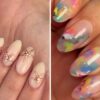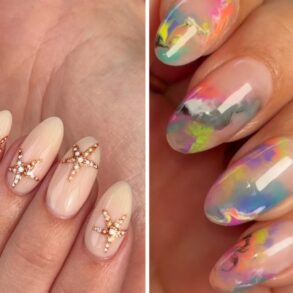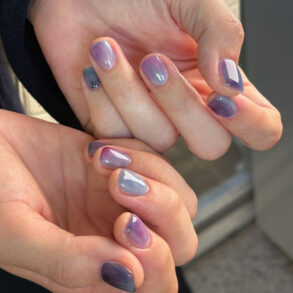Dealing with stubby nails that grow at a sloth’s pace can be frustrating when you’re dreaming of Cynthia Erivo-inspired tips. But there’s a hack floating around TikTok that promises to help you get manicure-ready nails quickly: Use minoxidil, the active ingredient in Rogaine.
The information comes courtesy of dermatologist Lindsey Zubritsky, MD, aka @dermguru on TikTok, who slipped this little nugget of info into a larger post about things she wishes more people knew. In the video, she writes, “If you want to grow nails like weeds, drop some Rogaine at the base.”
Naturally, people slid into the comments with lots of questions—and honestly, same. So, we tapped three more dermatologists for their take on this hack.
Meet the experts: Cindy Wassef, MD, an associate professor at the Rutgers Center for Dermatology; Gary Goldenberg, MD, assistant clinical professor of dermatology at Icahn School of Medicine at Mount Sinai Hospital; Joshua Zeichner, MD, director of cosmetic and clinical research at Mount Sinai Hospital
What is minoxidil, again?
Minoxidil is medication that’s used to stimulate hair growth in people who are balding, explains Joshua Zeichner, MD, director of cosmetic and clinical research at Mount Sinai Hospital. It’s often used topically—both in prescription and over-the-counter form—to help hair growth, but minoxidil also comes in an oral prescription.
“It works by dilating blood vessels,” Zeichner says. “Originally, it was prescribed orally to treat high blood pressure, and doctors found that patients using the drug grew more hair on their head. It was from that discovery that minoxidil was developed as a topical formula for hair thinning.”
Ok, but can minoxidil help your nails grow?
Yep, @dermguru is onto something: minoxidil can, in fact, help your nails grow. “Minoxidil is thought to work on the nails similarly to how it works on the hair—by widening blood vessels and increasing blood flow to the area,” says Cindy Wassef, MD, an associate professor at the Rutgers Center for Dermatology. “That results in nail growth.”
There isn’t a ton of research into this, but there is some. A 2017 pilot study published in the International Journal of Dermatology found that there was statistically significant nail growth in 16 people who applied two squirts of a 5% concentration of topical minoxidil to their nail folds over eight weeks compared to people who didn’t use the medication.
And a scientific letter published in the journal Experimental Dermatology in 2021 did a head-to-head comparison on the effectiveness of 5% topical minoxidil and 2.5 mg oral biotin in increasing the nail growth rate of fingernails in healthy adults over 28 days. The researchers found that people in the minoxidil group had a 19 percent increase in nail growth rate compared to those in the biotin group (they had just a 13 percent increase).
But while most of the (admittedly small) research centers around using topical minoxidil for nail growth, it’s “feasible” that the perks would extend to people who use the oral form of the medication, too, according to Gary Goldenberg, MD, assistant clinical professor of dermatology at Icahn School of Medicine at Mount Sinai Hospital.
Are there any downsides to using minoxidil for nail growth?
Dermatologists have a few concerns about going this route, actually. Topical minoxidil comes with the risk of a few uncomfortable side effects, including irritation, burning, and stinging, Dr. Wassef points out. That means you could be left with wildly angry nail beds, which can make it hard to text and type comfortably. “You should also be careful that it does not drip on other areas of skin and it is completely dry before touching other areas of the body,” he says. “If minoxidil comes in contact with other areas unintentionally, you may notice increased hair growth there.”
Zeichner also warns about accidentally spreading the medication to your face and other areas of your body. “You probably don’t even realize how many times you touch your face during the day,” he says. Finally, Zeichner points out that minoxidil just isn’t approved by the Food and Drug Administration to be used on your nails. “We do not have good data on its safety or effectiveness when used there,” he says.
Still, if you really want to try this hack, Zeichner suggests dipping a cotton swab into the minoxidil and rubbing it along the cuticle area of your fingernail. “After a single application, discard the swab and then dip a clean one into the bottle,” he says. “You do not want to double dip the swab and potentially contaminate the bottle of minoxidil.”
But if nail growth is a big issue for you, Wassef recommends checking in with a dermatologist to find out what could be behind this.
Korin Miller is a freelance writer specializing in general wellness, sexual health and relationships, and lifestyle trends, with work appearing in Men’s Health, Women’s Health, Self, Glamour, and more. She has a master’s degree from American University, lives by the beach, and hopes to own a teacup pig and taco truck one day.
This post was originally published on this site be sure to check out more of their content.






